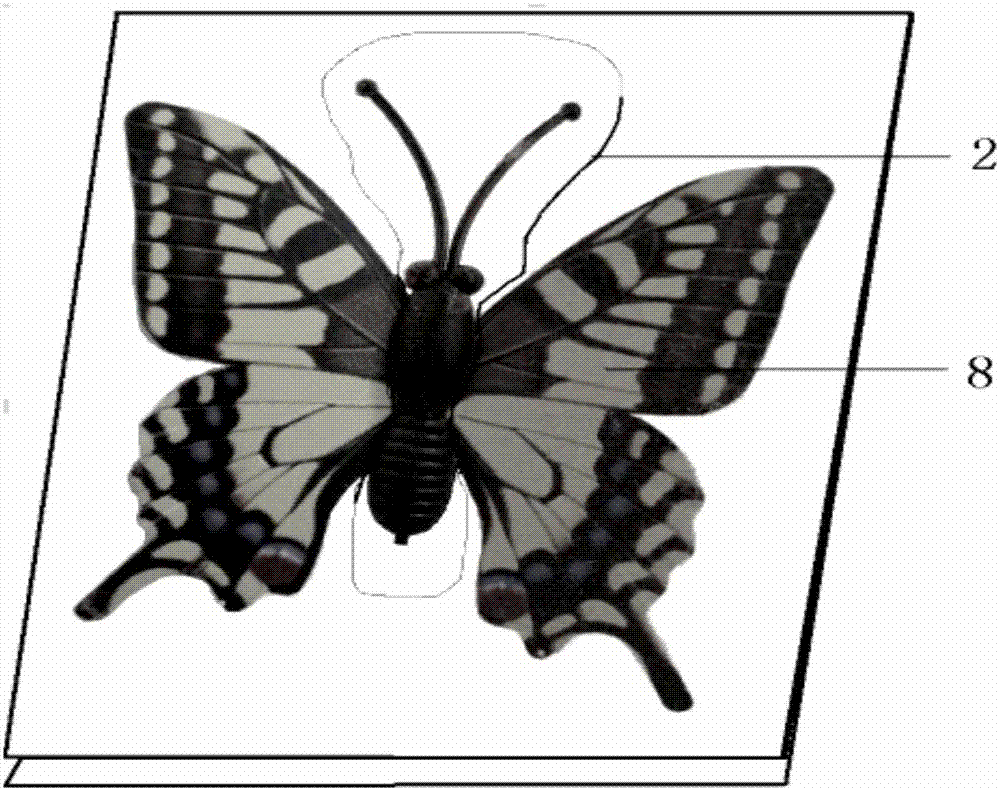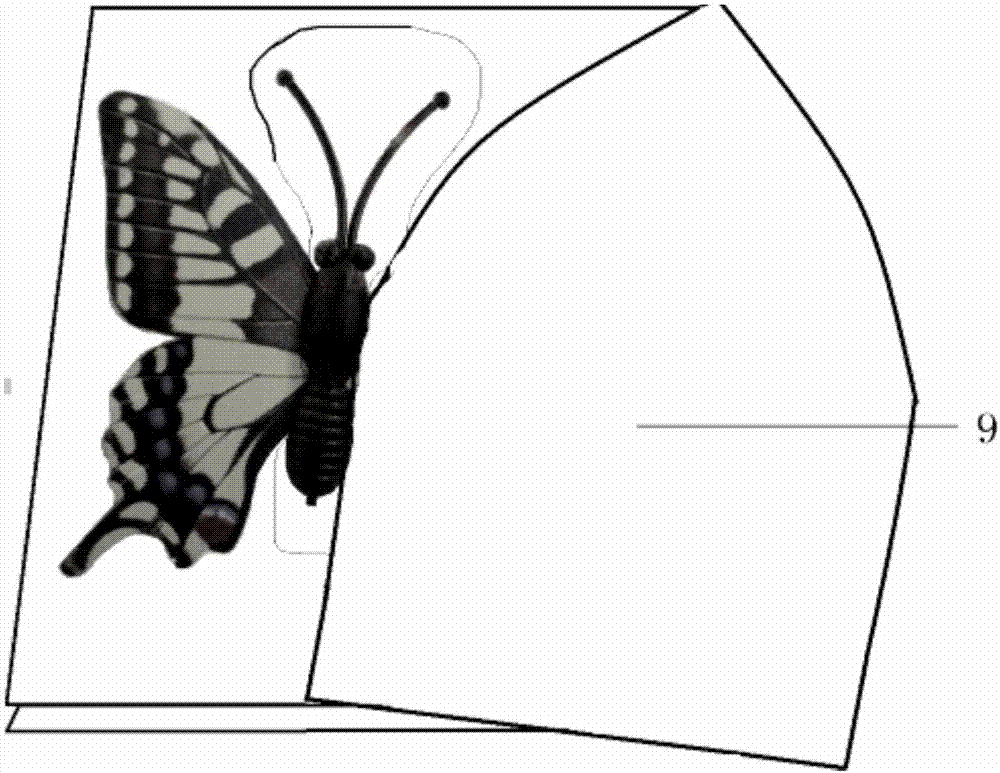Method for making resin embedded Lepidoptera insect specimen
A technology of Lepidoptera insects and a production method, which is applied in the field of insect taxonomy and can solve the problems of discoloration of butterfly wings, severe discoloration of specimens, and detachment of specimens.
- Summary
- Abstract
- Description
- Claims
- Application Information
AI Technical Summary
Problems solved by technology
Method used
Image
Examples
Embodiment Construction
[0015] Embodiments of the present invention will be described in detail below in conjunction with the accompanying drawings.
[0016] In the invention, the wings of the Lepidoptera insects are plastic-sealed first, then poured and solidified with resin, and finally made into a resin-embedded specimen.
[0017] According to the size of the Lepidoptera insect specimens, select a suitable size plastic film.
[0018] figure 1 According to the size of the Lepidoptera insect body (head 3, chest 4, abdomen 5 and antennae 1), two layers of plastic film at the body are cut out, that is, a hole is dug at the same position of the upper plastic film 6 and the lower plastic film 7, In order to leave space for the body of Lepidoptera insects. Cut the upper layer of plastic film 6 and the lower layer of plastic film 7 according to the size of the specimen along the plastic film cutting line 2, discard the two layers of plastic film within the plastic film cutting line 2, and keep the rest ...
PUM
 Login to View More
Login to View More Abstract
Description
Claims
Application Information
 Login to View More
Login to View More - R&D
- Intellectual Property
- Life Sciences
- Materials
- Tech Scout
- Unparalleled Data Quality
- Higher Quality Content
- 60% Fewer Hallucinations
Browse by: Latest US Patents, China's latest patents, Technical Efficacy Thesaurus, Application Domain, Technology Topic, Popular Technical Reports.
© 2025 PatSnap. All rights reserved.Legal|Privacy policy|Modern Slavery Act Transparency Statement|Sitemap|About US| Contact US: help@patsnap.com



